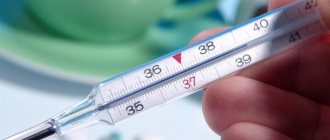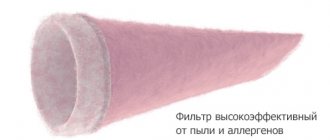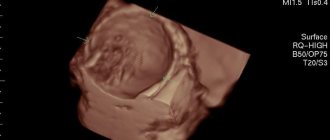Freezing is the most severe acute cold injury that occurs during prolonged general exposure to low temperatures , humid air, wind, etc.
One of the factors leading to freezing is alcohol abuse (up to 90% of those who freeze in peacetime). Freezing is often combined with frostbite of various parts of the body.
The temperature in the rectum of victims often drops to 32 °C. When it drops below +22…+25 °C, death occurs.
Symptoms and stages of freezing
There are 3 stages of freezing.
The victims note that at first his feeling of cold was replaced by a feeling of warmth, and before losing consciousness they felt good and easy.
Adynamic stage
In the adynamic stage of freezing (general cooling), consciousness is partially preserved or only clouded.
The victims are drowsy, complain of weakness, fatigue, dizziness, and sometimes headache. Their speech is intelligible, but quiet and slow.
Body temperature ranges from 30 to 32 °C . Hemodynamics and respiratory function are not affected.
Stuporous stage
The stuporous stage is characterized by deeper disturbances of consciousness and the addition of disturbances in central hemodynamics:
- consciousness is usually lost;
- there is a speech disorder;
- blank look;
- disorientation;
- blood pressure is reduced to 12 kPa (90 mm Hg);
- severe bradycardia up to 30 beats per minute.
Breathing disorders are usually absent.
Convulsive stage
In the last, convulsive stage, consciousness is completely absent.
- Body temperature drops to +26… +30 °C.
- Muscles are tense.
- Trismus (convulsive tonic contraction of the masticatory muscles) is especially pronounced.
- The limbs are in a state of tonic flexion contracture.
- Blood pressure is below 12 kPa (90 mmHg).
- The pulse is arrhythmic, severe bradycardia.
- Breathing disturbances are noted.
Frostbite in those affected and cerebral coma
In all stages of freezing there can be various combinations with different degrees of frostbite in those affected.
Thus, the general impact of cold (freezing) is mainly characterized by the development of varying degrees of impairment of consciousness - the development of cerebral coma.
To differentiate this extremely serious condition from other types of coma, a typical medical history and a pronounced decrease in body temperature (measured in the rectum) help. Maximum medical thermometers are not suitable for measuring temperatures below 35 °C. In areas with cold winters and a climate at the FAP, it is advisable to have an electric thermometer or any other that allows you to measure temperatures below 35 °C.
Pathogenesis (what happens?) during General cooling:
Widespread changes such as chromatolysis, reactive lesions of nerve fibers and terminal structures are detected. Changes are observed in the cerebral cortex, cerebellum, subcortical nodes, and spinal cord. Noteworthy is the significant damage to the sensitive nodes: spinal, semilunar, and many vegetative nodes.
In people recovered from a state of deep cooling, reversible functional disorders are observed: changes in neuro-reflex activity, hyperthermia, vegetative-trophic disorders (foci of baldness, trophic ulcers), changes in the red and white blood system (anemia, leukocytosis, increased ESR), associated infectious diseases.
Treatment for freezing
The life of a victim with general cooling (freezing) depends on how quickly normal body temperature is restored.
In addition, in the stuporous and, to a greater extent, convulsive stage, far-reaching dysfunctions of the brain, cardiovascular and respiratory systems are noted.
If transporting the victim to the hospital does not exceed 1 hour
When a casualty is discovered, the paramedic will have to solve very serious tactical issues.
If the time of transporting the victim to any hospital does not exceed 1 hour, then it is necessary to administer caffeine to the patient and, if he can drink, give a hot drink: (in no case - alcohol), arrange intravenous drip infusion of heated solutions and immediately transport the patient to the hospital .
It is advisable to consult with the surgeon on duty or the doctor on duty at the nearest hospital: perhaps he will advise you to start warming up at the outpatient clinic and send an ambulance, reinforced by an anesthesiologist and anesthetist, to help.
If transporting the victim to a hospital exceeds 1 hour
If the delivery time for the victim is long enough, then it is better to call a doctor and start warming up on the spot at the first aid station.
Placing the patient in a warm bath
The best way to warm up is to place the patient in a bath with a water temperature of +34...+35 °C . Gradually adding hot water, the temperature is brought to +38... + 40 °C. At this level, the victim’s body continues to be warmed, accompanied by a light (not strong) massage with a soapy washcloth.
Warming is continued until the temperature in the rectum rises to 35 °C.
It is necessary to ensure that the patient does not choke in the bath. Therefore, assistance to such victims should be provided by at least 2-3 people . Everything should be done quickly, but without fuss.
Unnecessary people, relatives of the victim (if they are in a state of panic) must be immediately removed from the premises.
- The paramedic instructs one of the volunteer assistants to monitor the temperature of the water in the bath and add water.
- Another person should constantly hold the patient’s head and give him a warm drink.
- The third should massage the victim’s body with soapy washcloths.
All extraneous conversations are excluded.
The paramedic coordinates the actions of his small “resuscitation team” and monitors the hemodynamic condition of the victim. In addition, he must arrange intravenous infusions into the vein of the elbow with mandatory immobilization of this limb.
- Solutions of rheopolyglucin, polyglucin, gelatinol or hemodez, heated to 37 °C, are injected intravenously.
- 40-60 ml of a warmed 40% glucose solution, 30-60 mg of prednisolone, 10-20 ml of a 5% vitamin C solution are also administered; for bradycardia - caffeine - 1-2 ml of 20% solution.
- Then infusion therapy is supplemented by the introduction of 400 ml of 5-10% glucose solution with 10,000 units of heparin.
- After this, 400 ml of one of the solutions of low molecular weight dextrans with 5 ml of trental is again infused.
- Next, continue infusion of a 5% glucose solution with vitamins.
- The total volume of infusion usually does not exceed 1500-2000 ml. The infusion begins while the victim is warming up, which takes an average of 1 1/2-2 hours.
After warming up, the patient is wiped dry and transferred to a warm bed, where the infusion continues. After warming up and normalization of vital functions, the victim is transferred to a hospital for further treatment.
Resuscitation of a patient if there is no bath in the house
But what to do if there is no bath? It is necessary to use all available means in order to warm the patient as quickly .
You can use a barrel or some other large container if it can all be quickly moved to a warm room and quickly filled with warm water. If there is no bath, no other large container, no warm water, then the patient should be placed in a warm room and massaged with clean hands or swabs moistened with alcohol, cologne or vodka.
to place heating pads with warm water on the groin folds and armpits . In these areas, large arteries run close to the skin and heat travels faster throughout the body.
It should be noted that it is impossible to foresee all situations in which a paramedic may find himself. When providing first aid to victims of general cooling (freezing), you need to remember: the sooner the patient is warmed up, the greater the chance he has of staying alive and the less likely there are subsequent complications.
The most common cases are frostbite of the extremities and severe bronchopneumonia. Life-threatening complications may include acute cerebral edema, respiratory and cardiac arrest.
Any severity of the frozen state is not a contraindication for immediate warming.
Prevention and first aid for cooling, hypothermia, frostbite
Quite cold weather is expected in the near future. The main dangers for humans during frosts are hypothermia and frostbite.
Cold leads to intense loss of heat by the body, causes a weakening of tactile and pain sensitivity, reduces muscle strength and reaction speed, and paralyzes the will, thoughts, and movements. Prolonged exposure to cold on the body can lead to chills, hypothermia, and frostbite.
COOLING
Cooling can be general or local. General cooling is a consequence of prolonged exposure to cold on the body. Local cooling occurs with short-term exposure to cold on individual, usually unprotected areas of the body. Chilling can occur during prolonged exposure to cold conditions, cold wind, frost, a humid environment, cold water, or a cold room. Under these conditions, the body automatically increases heat production. When the amount of heat produced by the body is less than that which is consumed, the process of formation of goose bumps begins, narrowing the blood vessels on the surface of the skin, which ensures that warm blood remains inside.
Characteristic signs of severe cooling are: trembling, pale skin, stiffness of movement, apathy, rare, shallow breathing, weak pulse, desire to group, press arms and legs to the body, “shrink,” drowsiness, loss of consciousness.
Preventive measures to prevent cooling of the body include the use of warm clothing, limiting the time spent in the cold, periodic warming, and drinking hot drinks.
HYPOCOOLING
Hypothermia is the process of constantly reducing body temperature to dangerous limits under the influence of cold. The rapid development of hypothermia in the body is facilitated by: low temperature and high air humidity, wind, lack of shelter and warm clothing, insufficient nutrition, dehydration, and lack of movement.
The main signs of hypothermia are:
- decrease in body temperature below 36˚;
- decreased heart rate;
- breathing rhythm disturbance;
- feeling tired; drowsiness;
- slow speech;
- memory impairment;
- blue discoloration of the skin;
- loss of motor activity;
- loss of consciousness.
First aid for hypothermia
Immediately provide conditions to stop heat transfer from the body: pull the person out of cold water, snow, a cold room, open, windy space, lift him from a wet, cold surface.
Warm the victim. Take off wet clothes and put on dry clothes and a hat, wrap them in a blanket with an additional heat source, and give them a hot drink. First of all, you need to warm up your torso, and then your arms and legs.
If the victim is in a serious condition, loses consciousness, pulse and breathing are slow or absent, then it is necessary to immediately call a doctor or take the patient to a medical facility.
When providing assistance to a victim, it is prohibited:
Carry out intensive heating:
- hot shower, hot bath, hot room;
- rub a person, as this leads to an influx of cold blood from the periphery to the internal organs and brain, which will continue to cool. Warming should go from the center to the periphery;
- use open fire and alcohol;
- rub the victim with snow.
FROSTBITE
Along with general hypothermia of the body, low temperature, high air humidity, and wind can cause local damage to the body - frostbite. Frostbite is necrosis (death) or inflammation of tissue caused by cold. Most often these are open places: hands, face, neck, legs. Wet, damp clothing and shoes, poor nutrition, lack of hot food, inability to warm up, fatigue, and blood loss increase the likelihood of frostbite.
Based on the degree of damage, there are four stages of frostbite:
1st degree: paleness and redness of the skin, swelling and swelling of the affected area, pain and burning sensation at the site of the lesion, the appearance of watery blisters.
2nd degree: circulatory disorder, bluish discoloration of the affected areas, significant swelling, blisters filled with clear liquid.
3.4 degree: necrosis of the skin, muscles, tendons, joints, decrease in skin temperature and loss of sensitivity, separation of dead areas, formation of suppuration.
Basic preventive measures to prevent frostbite:
- Correct selection of clothing, shoes, equipment, food;
- Reducing to a minimum the time of exposure to cold on exposed areas of the body;
- Active constant movements;
- Control over exposed areas of the body, the ability to recognize the onset of the frostbite process, and take the necessary measures to provide assistance;
Warming exposed cold areas of the body by contacting them with warm parts of the body:
- put your hands under your armpits or between your legs, put your hand on your ear, nose, cheek.
Warm clothing is one of the main factors in counteracting the cold. Preference should be given to multi-layered clothing. Remember that thick clothing will lead to freezing.
In cold conditions, footwear and foot insulation should be of utmost importance. Shoes should be taken one or two sizes larger than usual, which will ensure normal blood circulation to the feet and prevent frostbite. To insulate the feet, insoles made of felt, felt, and fur are used. You should wear woolen socks on your feet.
Multi-layer gloves provide reliable protection of your hands from the cold.
First aid for frostbite
In the initial period, first aid consists of stopping the cooling, warming the limb, restoring blood circulation in cold-damaged tissues and preventing the development of infection.
At the first signs of frostbite, the victim must be taken to the nearest warm room and removed frozen shoes, socks, and gloves.
Cooled areas should be warmed until reddened with warm hands, breathing, and then a cotton-gauze bandage should be applied.
If there are signs of deep frostbite, you should limit yourself to applying a heat-insulating bandage to the affected surface.
The affected limbs are given a state of rest by using improvised means (a board, a piece of plywood, thick cardboard), applying and bandaging them over the bandage. Padded jackets, sweatshirts, and woolen fabric can be used as heat-insulating material.
They provide hot drinks and hot food.
Simultaneously with carrying out first aid measures, it is necessary to urgently call a doctor.
When providing first aid it is prohibited:
rub the affected areas with snow, lubricate them with greasy ointments, and warm them intensively.
GBU RS (Y) "Oymyakon Central District Hospital"
Prevention of cold injury
Prevention of cold injury in everyday life is, first of all, the fight against drunkenness . Then the residents of their village need to read a lecture about frostbite and freezing, and how to dress correctly (according to the weather). Particular attention should be paid to correctly selected shoes: tight shoes in the cold will inevitably lead to frostbite or chronic cold injury - cold neurovasculitis.
In industries involving prolonged exposure to cold, humid atmospheres, and water, it is necessary to provide rooms for heating workers and, of course, for drying shoes, socks and foot wraps. When working in water, you should wear rubber boots with sheepskin liners.
For watchmen, linemen, shepherds and others, portable, personal electric and chemical heating pads . The clothing of persons who constantly work in conditions that can lead to cold injury must be rational. These safety requirements should be monitored together with the safety engineer and the head of the FAP.
First aid
The victim must be moved from the cold to a warm, windless place, take off wet clothes, and wrap him in a blanket. You can warm a frostbitten area using heat-insulating materials, for example, cotton-gauze bandages with a layer of compress paper or plastic film; if this is not at hand, use foam rubber, blankets, and so on.
A hot drink and a warm bath will help you warm up. It is necessary to heat the water in it gradually. They start with a temperature of plus 17–18 degrees and within about an hour the water is heated to plus 36–37 degrees.
But you shouldn’t rub frostbitten skin with ice and snow. There is a high risk of further hypothermia and injury.







